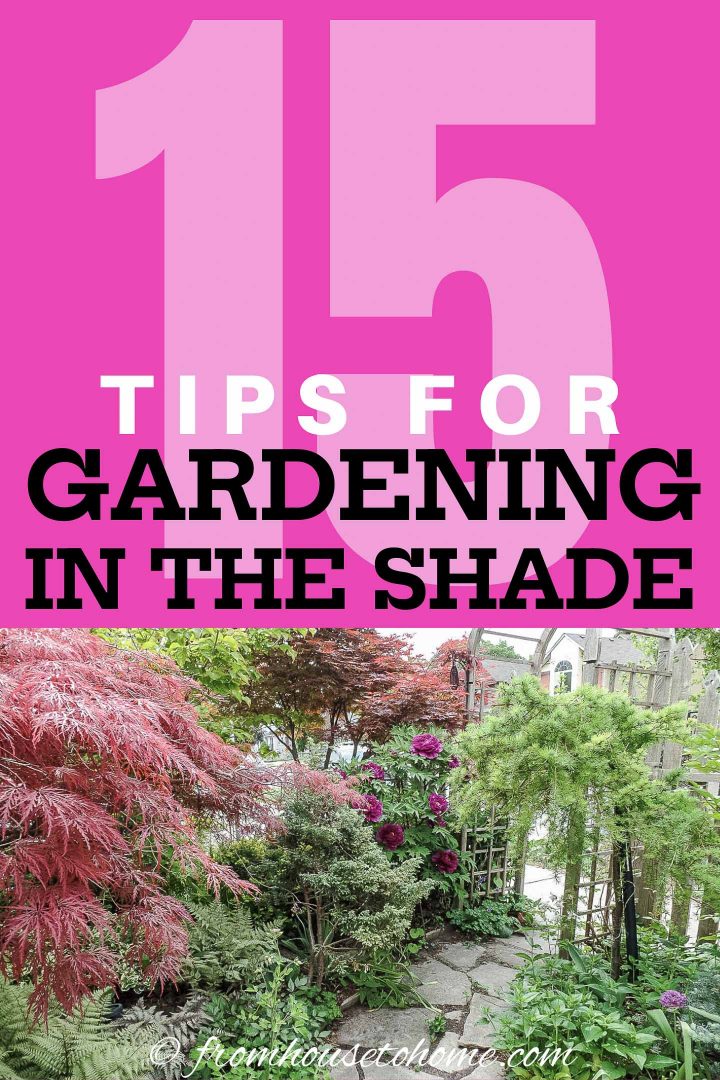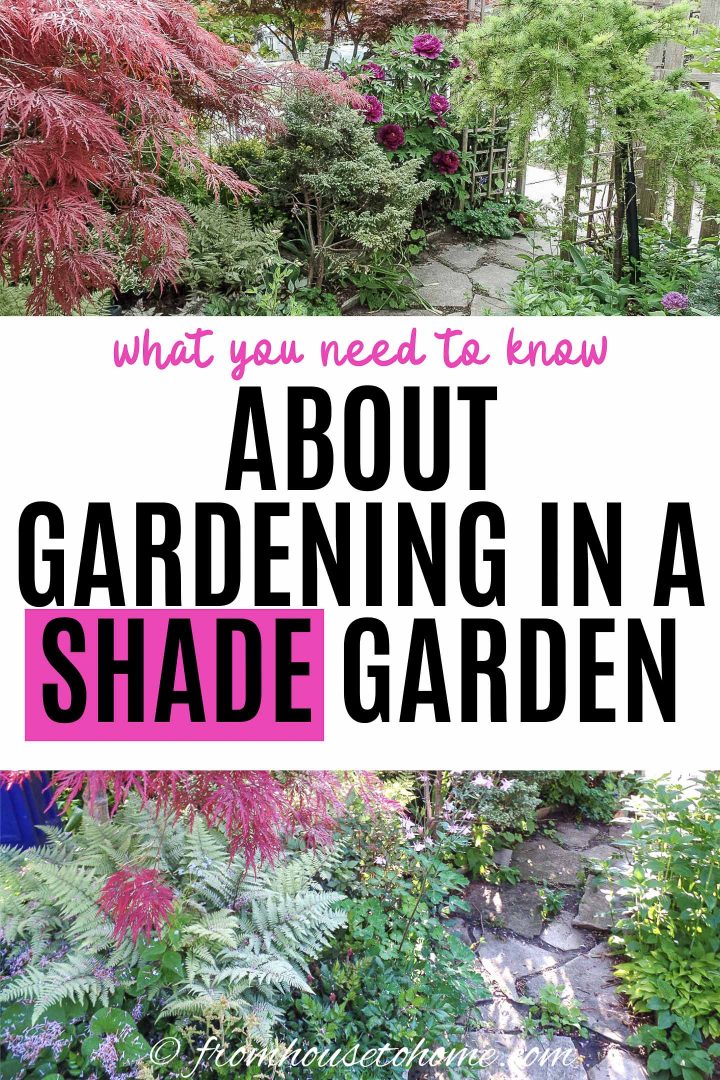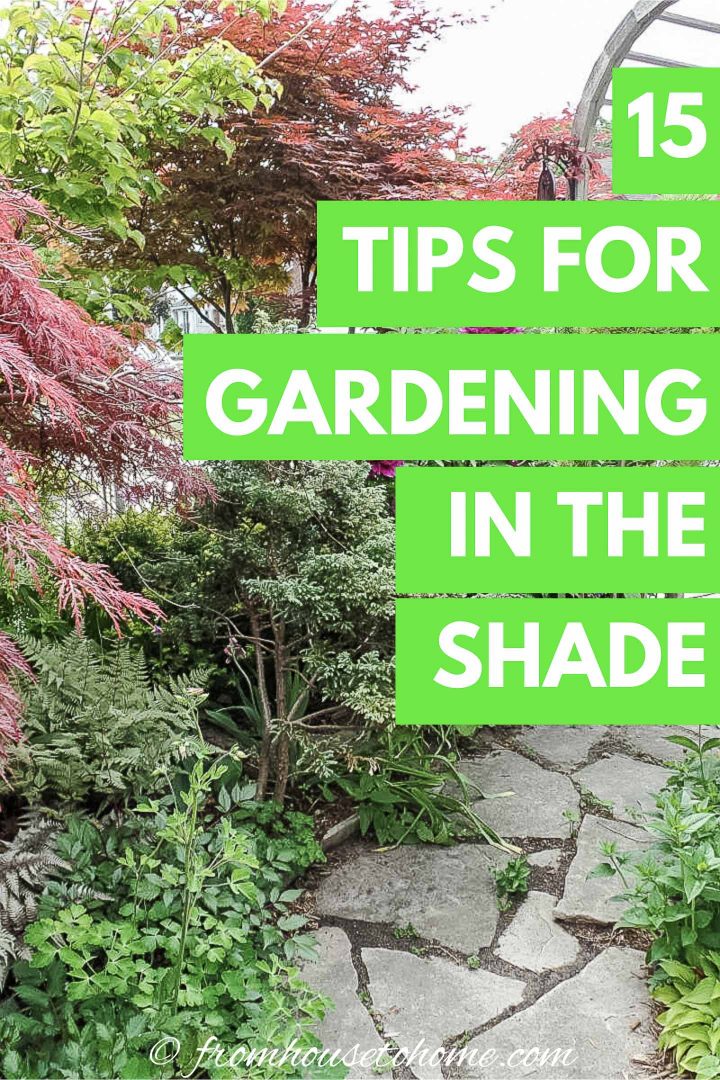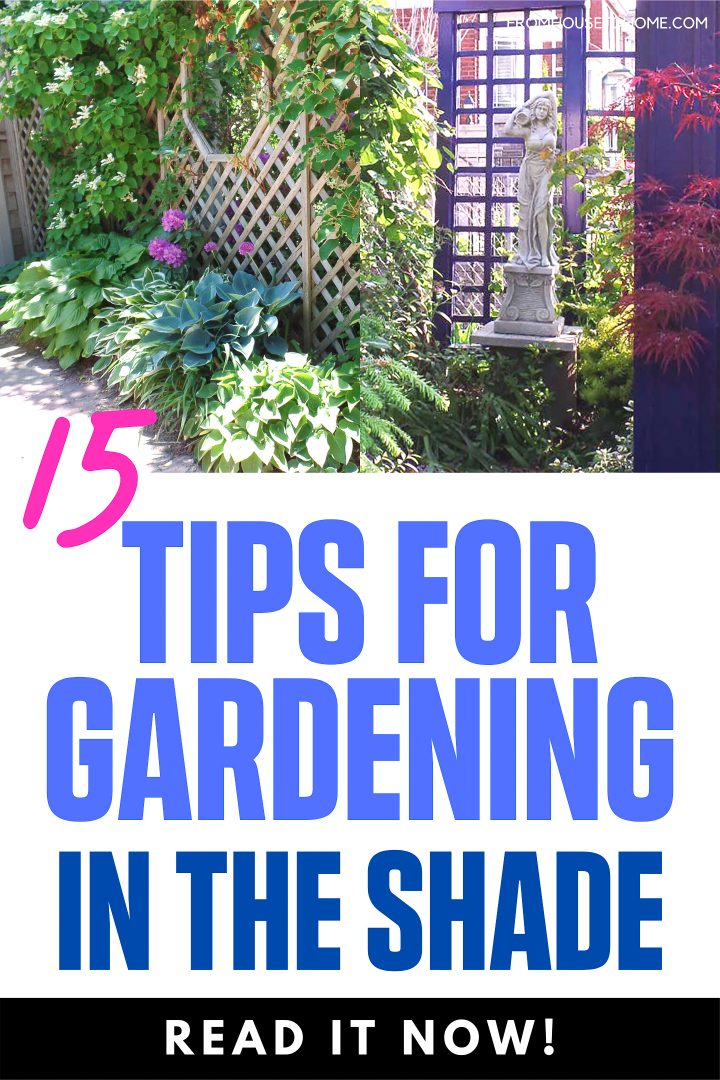15 Tips For Maintaining a Stunning Shade Garden
As your garden grows, you will find that you have more shade than sun in areas under trees and bushes. Or maybe you've bought a new house that already had an established garden. In either case, shade gardening is now a part of your life. Find out how to make the most of it with our tips for maintaining a shade garden.

As your garden matures you will find that you have more shade than sun in areas under trees and large bushes.
While it may seem a bit daunting at first (there used to be so much sun!!), it is really where you can express your personality and individuality by adding some layers to your garden.
Here are my tips to help you to maintain your shade garden.
1 | Limb up large bushes

Limb up the bushes and cut out the new bottom growth.
I do this in the spring so that the larger bushes, like French lilac, are encouraged to have top bloom, leaving the base area free for smaller shade bushes and perennials.
2 | Assess the light

Assess the area for hours of sunlight.
I look at the garden from all directions with light in mind before I make my plant list.
Make notes on how much of the area is in shade and how much in sun.
3 | Put plants in the right locations

Use this information to choose the right shade, or part shade plant for the location.
Finding the right plant for the right location helps make maintaining the garden much easier.
Under a canopy such as Japanese maple you will probably want to put ferns and hostas (or other shade-loving perennials).
While you may find that columbines will do better on the periphery where there is more light.
4 | Discourage weeds

Use dense planting to discourage weeds.
I am a plant junky who feels compelled to try new plants.
This means I am always looking for a few inches of bare soil to place new acquisitions.
I reap big rewards with less weeding!
5 | Repeat the plants

Remember, if one plant is good, three is better.
Having the same plant and color echoed throughout the garden adds continuity and avoids a hodge-podge look.
In this picture the repeated color and texture of Japanese Maples draws your eye down the path.
The beautiful Japanese tree peony with the huge purple blooms helps, too!
6 | Avoid invasive plants

Avoid using invasive plants.
I have made the mistake of planting periwinkle for its lovely blue flowers.
Now it has spread everywhere and chokes out everything else.
I also have an ever-expanding patch of Lily of the Valley that started in my neighbor’s yard.
Both these plants like shade and are hard to get rid of once established.
Instead, it is better to have some Forget-me-nots, an old perennial that self seeds.
Its lovely blue flowers are charming and the plant is easy to pull out if it is in your way.
7 | Amend the soil
Amend the soil with triple mix when you plant a new plant.
I also add triple-mix and compost around the existing bushes and plants at least once every two years.
8 | Vary plant heights
Incorporate height variety.
Generally the shorter plants are in front but I try to avoid having all the plants at one level.
Add some shorter ones behind the taller ones to create some curiosity.
9 | Consider foliage as well as flowers

Consider foliage shape and color as well as flowers.
Japanese maples are a favorite of mine for their different leaf shapes and variety of colors.
I also love plants with blue foliage which add a calming feel to the garden.

To punch it up a notch I add Pieris Formosa for its red bronze leaves, or Chardonnay Pearls Deutzia with its yellow leaves and white flowers.
They practically glow in the shade!
10 | Add year round interest

Think in terms of year round interest.
I plant perennials and shrubs that will have a succession of blooms or changing leaf color throughout the growing season.
I rely heavily on evergreens for the winter.
Rhododendrons, false cypress, and yews are staples in my garden, along with Hoopsii and Montgomery spruce.
In the spring, daffodils and tulips are finished blooming by the time the deciduous leaves of companion perennials unfold.
Because my yard is small and space is precious, I often dual plant.
The bulbs, trilliums, and fern leaf peonies are planted between evergreens. So when their leaves disappear by mid July, the space is still filled.

Then the fall anemones which are planted close by add color to the garden.
11 | “Candle” evergreens
“Candle” evergreens in late spring when new growth has started.
To do this, cut off at least half of the new growth.
You can tell what the new growth is because it is usually lighter in color.
This will keep the size smaller and encourage denser growth.
12 | Use mulch
Apply a 3 to 4 inch layer of mulch around all plants every year.
This helps to keep moisture in the soil and acts as a weed barrier.
13 | Install garden art

Install garden art to add visual interest with sculptures, bird baths, and clematis covered arbors.
Garden art can be made from plants, too.
A well placed pot of begonias on a fence or plinth will make you smile.
Be cautious about placing too many small pieces around. Little ornaments can make a yard look junky.
It is better to have a few large items that act as focal points.
14 | Add water

Adding a water feature or two is an easy way to create interest to your yard.
The sound of water definitely enhances the spirit of a garden.

But even a simple bird bath creates a feeling of serenity. And encourages the birds to visit.
15 | Light it up

Landscape lighting will add a magical element to your garden.
Highlight selected plants and sculptures by pointing landscape spot lights up and down them so that your garden enjoyment is extended into the evening.
Other shade garden ideas you might like
Or browse all of our shade garden ideas.
Comments or questions about our tips for maintaining a shade garden? Tell us in the section below.
Pin It So You Don't Forget It!

This post was originally published on May 21, 2020 but was updated with new content on November 23, 2024.






Wow, you know what I like and have been trying to create, but cannot quite do it. However, you nailed it! I love you garden, which I could create this look in my shady garden. Thank you so much for sharing.
Thanks, Ivory! It took quite a few years, and a lot of moving things around to get it to look like this 🙂 Glad you like it!
Your ideas are amazing! However, is there a possibility to grow vegetables in such area? I have grown there spinach (I bought this type: https://gardenseedsmarket.com/spinach-asta-f1.html because it is suitable for partially shady gardens), it was quite good. But what about other plants? Have you got any idea what will be good for this area? I also have sunny part of this garden but I would like to make this space as useful as possible.
Yes Lizz, it is possible to grow vegetables that are grown for their leaves and roots in partial shade. While there are no vegetables that will grow in total shade, arugula, lettuce, bok choy, and herbs will do okay with only 1-2 hrs. of sun daily. Mustard green, collard greens, bush beans, parsnips, and kale need 4 hrs. sunlight. If you have 6 hrs., you can grow carrots, beets, broccoli, cauliflower, and potatoes. I refer you to the following web site for more information: http://www.theprairiehomestead.com/2020/02/vegetables-that-grow-in-the-shade.html – I also grow raspberries, strawberries, blueberries, and rhubarb in partial shade under a serviceberry tree.
Maxis is a great groundcover for shade gardens. It stays very short, doesn’t get unruly, and helps keep down weeds. And in the spring the blue blossoms are nice before many other plants are blooming.
Thank you Betty for the suggestion. I think vinca is great for shady spaces that do not have other perennials growing in the area. I reluctantly removed it from my understory because it was choking out more favored ferns, hostas, etc. I agree with you that weeds can’t compete, it looks glorious in the spring and it is evergreen.
What is triple mix that you use when planting?
Hello Bonnie, Triple mix is a blend of equal parts top soil, peat moss and manure. You can blend your own or purchase it at box stores or garden centers in premixed bags.